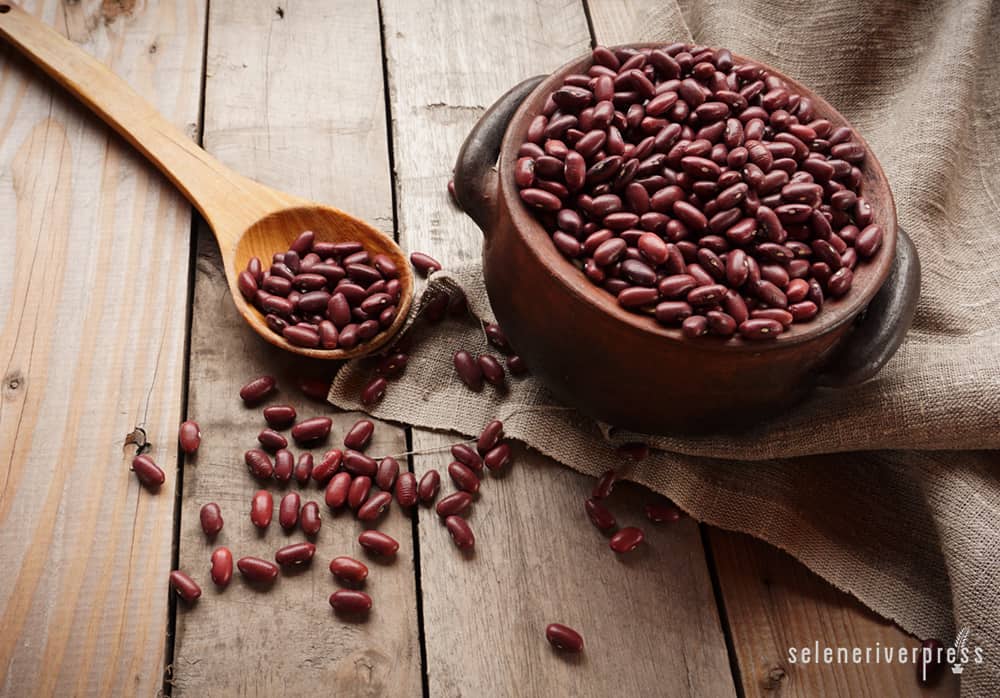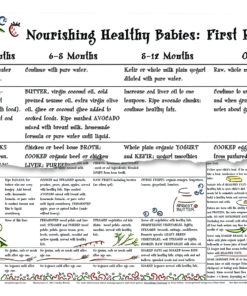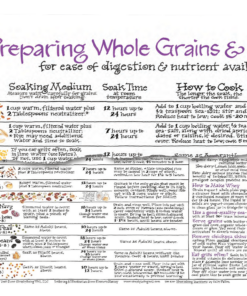I love me some good beans! Don’t you? Beans, beans, good for your heart…the more you eat, the more you (should not) experience flatulence!
Beans, when prepared well, are chock-full of nutrients. We have heard for years that the proper combination of beans and grains can provide an inexpensive protein option. They are also versatile in the kitchen, providing a nearly blank canvas for spices from different cuisines.
Unfortunately, beans have gone the way of most foods these days. They have turned into a precooked convenience food that you can purchase in a can and dump into a recipe. We buy canned beans because it seems easier than preparing them ourselves. Just pick that can off the shelf and toss it in the shopping cart. However, most of us have no idea that those canned beans have not been prepared properly, which means they cannot deliver on the nutritional promise touted on the labels. But they will provide something unwanted—flatulence. And lots of it, guaranteed!
In this article I will talk about why making your own beans provides superior nutrition for the body, and then I will divulge the secrets for achieving deliciously tender beans—even at 5,000 feet!
Beans Are Seeds
“Every bean (every nut, every grain, every seed) is a seed.” Any student who has taken one of my “Preparing Beans” cooking classes over the past ten or so years has heard me say these very words. Who cares? You should. Why does it matter? Because seeds want to become new plants; they are the procreation mechanism of the plant kingdom. They do not want to be digested by anything that eats them. Seeds are built to resist digestion. Their mission is to stay intact until they can find fertile ground and grow into a plant.
Sometimes I liken seeds to nuclear containment centers. Imagine a seed keeping its nutrients in a locked down, totally secure containment center. No entry, no exit. If we eaters of beans want access to those nutrients, we must neutralize the security measures. Otherwise, the seed contains “anti-nutrients.” These are the opposite of nutrients, or nutrient antagonists. And just soaking beans in water is not going to unlock them.
What, exactly, are these anti-nutrients? In beans and in every other seed, the anti-nutrients are phytic acid and enzyme inhibitors. The complex sugars (oligosaccharides) in beans are responsible for creating gas (flatulence) in the digestive tract. Phytic acid binds with the minerals your body wants and needs, preventing your small intestine from absorbing them. And enzyme inhibitors will do just what their name implies—inhibit or prevent your enzymes from working. (Enzymes help you digest your food. To put it in the simplest terms, they act as catalysts for the digestive process and many other things.)
All of this is pretty easy to deal with, as long as you follow one of these methods:
Method 1: Sprout your beans before you cook them. This will turn them into a plant before they go into the cooking pot.
Method 2: Soak your beans in either acidulated water (with two tablespoons or more of lemon juice, whey, or apple cider vinegar) or basic water (with a pinch of baking soda). The type of neutralizer you use for soaking depends on what type of bean you soak. The easiest way to know what to put in the water—acid or base—is to look at the shape of the bean. All kidney-shaped beans (with the exception of black turtle beans) need a pinch of baking soda. The water temperature counts too, so make sure to use hot water just off the boil. Rinse and replace the neutralizer every time you change out the hot water. This method will stand you in good stead because you will be effectively ridding those beans of the pesky anti-nutrients, the phytic acid and enzyme inhibitors, that keep the nutrients from you. Now you’ve got to tackle cooking.
(See my beautifully hand illustrated chart “Preparing Whole Grains and Legumes” for more detailed information on soaking and cooking beans. You’ll learn what kind of water you’ll need for soaking certain beans as well as how long to soak them.)
When you cook kidney shaped beans, you must break down the complex sugars. These are the cause of digestive disturbances such as bloating, cramping and flatulence. Adding a two inch or so piece of kombu (aka kelp) to the crock pot will help you accomplish this. There is no need to add kombu to lentils, garbanzos (chickpeas), or black beans, though you may wish to for the additional minerals that kombu provides.
The Trick to Tender Beans at 5,000 Feet…
Your Crock-Pot! Easy. Sprout or soak your beans as above. When you have soaked them long enough (about 7 hours for lentils, 12 for kidney-shaped beans, or 24 for garbanzos), rinse again with fresh water a few times. Pour the beans into your Crock-Pot or slow cooker. If using, add the kombu. (Remember, kombu is necessary for kidney-shaped beans and optional for all others.) Add fresh water to cover the beans by about 2 inches. Turn your Crock-Pot or slow cooker to high for one hour, then low for several hours. If you do this at night before you go to bed (cooking them about 8–10 hours), your beans will be ready when you wake up. Voila! Delicious, nutritious, tender beans.
Looking for more great nutrient dense recipes and information? Check out the first two volumes in my ongoing series titled Cooking Techniques for the Gut and Psychology Diet:
Photo from iStock/rtoapantam




